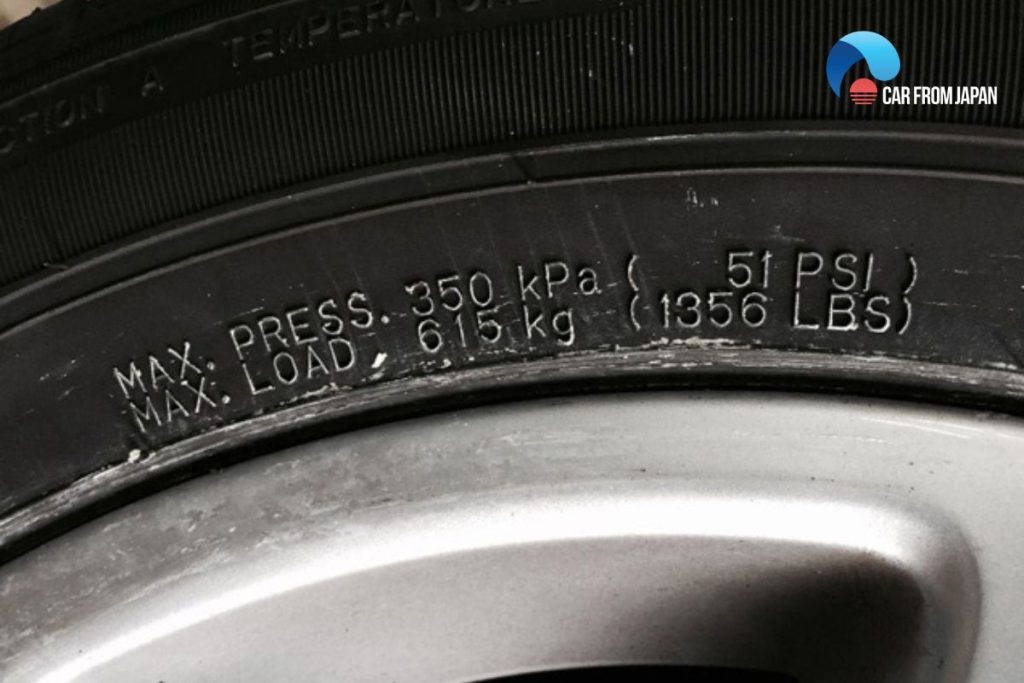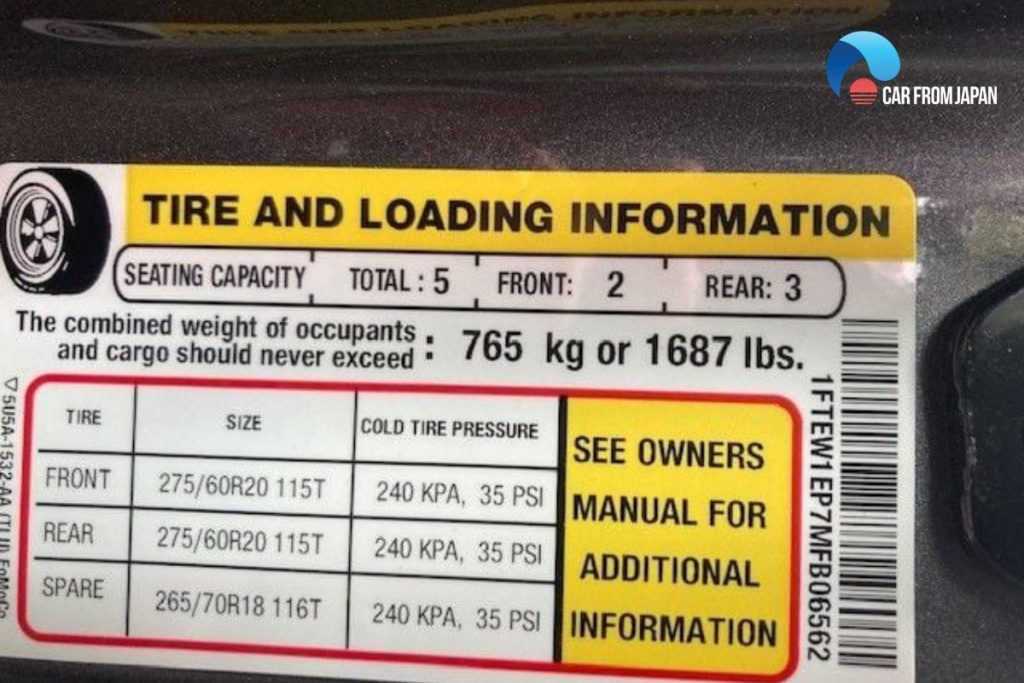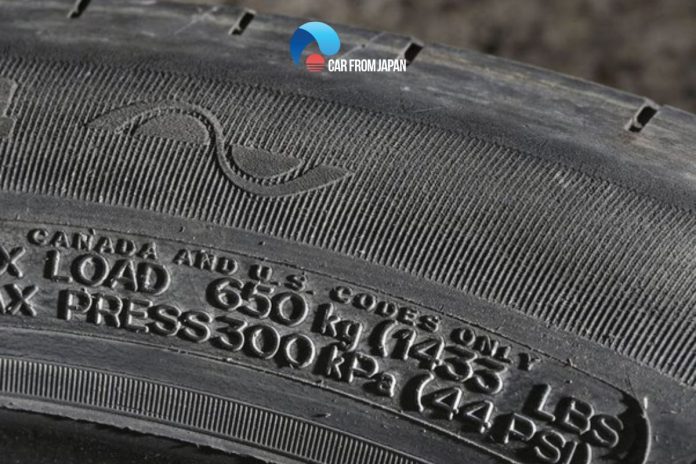PSI is an index that appears on car tires. However, not all drivers understand this parameter.
So what does PSI mean in cars? Drivers, please read the article below to get the most useful information.
Contents
What Does PSI Mean In Cars?
PSI stands for Pounds per Square Inch, specifically Pound-force per Square Inch. It is the pressure resulting from a force with a magnitude of one pound-force applied to an area of one square inch.
Specifically: 1 pound = 0.45359237 Kilograms and 1 inch = 2.54 Centimeters.
Simply put, PSI is the pressure index of compressed air in the tire and the limit pressure level is often printed on the tire for the driver to observe easily.
Imagine your tire as a balloon. The more air you pump into the balloon, the firmer it gets – that increased pressure is measured in PSI.
How to convert PSI to other pressure units:
- 1 PSI = 0.0689 Bar
- 1 PSI = 0.0681 atm
- 1 PSI = 6895 Pa
- 1 PSI = 6.895 kPa
- 1 PSI = 0.07 kg/cm2
- 1 PSI = 0.7 mH2O
- 1 PSI = 5.17 cmHg
PSI is an important indicator for vehicle maintenance because improper pressure can affect safety, performance, fuel economy, and tire lifespan.
When the driver inflates the tire with the correct pressure, the car moves on the road with the entire tire surface, the contact surface is evenly spread and worn evenly, helping to increase operating performance and tire life.
Do you know that when the tire pressure drops 6 PSI lower than the vehicle’s regulations, your car’s speed can decrease by up to 5%? Or the lifespan of your car tires can be 25% shorter due to low tire pressure.
Whether it’s an old car or a new car, we can see that PSI greatly affects the vehicle’s operating condition, whether it runs smoothly, consumes fuel, or is economical. So what PSI should my tires be?

Related Post: Low Tire Pressure Light but Tires Are Fine Issue: How To Fix
How Much PSI Should A Tire Have?
Typically, the recommended tire pressure ranges from 30 psi (~ 2.1 bar) to 35 psi (~ 2.4 bar). However, car tire pressure standards for each model are different.
For example, most 2-seat small trucks or 4-seat or more cars such as MPVs, and sedans… have standard car tire pressure of 27 – 32 PSI.
Particularly for some vehicles using special tires, the tire pressure can be up to 40 or 45 PSI.
Therefore, to have a suitable tire maintenance plan, car owners need to know the amount of pressure corresponding to the vehicle they are using.
In case of replacing new tires of the same size, comply with the tire pressure standards recommended on the vehicle label.
If the new tire is larger than the old one, it is necessary to check the maximum pressure index recorded on the rim to have an appropriate treatment plan.
Below are the car tire pressure tables for some popular car models:
| Make | Model | Tire size | Recommended PSI for a front tire | Recommended PSI for a rear tire |
| Honda | Civic | 215/50 R17 91V | 35 | 33 |
| Ford | Everest | 265/60R18 110T | 35 | 35 |
| Kia | Seltos | 205/55R16 91V | 35 | 35 |
| Hyundai | Santa Fe | 235/65R17 104H
235/55R19 101V 235/60R18 107V | 35 | 35 |
| Toyota | RAV4 | 225/65R17 | 33 | 33 |
| Toyota | Corolla | 205/55R16 91V | 36 | 35 |
| Toyota | Camry | 235/45R18 94Y | 35 | 35 |
Read More: What Is the Normal Tire Pressure After Driving?

How To Check Car Tire Pressure?
You may want to prepare these basic tools:
- Tire pressure gauge (pencil gauge)
- Air compressor
After preparing all the necessary tools and experience in pumping car tires, drivers can check tire pressure according to the following steps:
Detailed steps:
Step 1
The most accurate time to check tire pressure is when the wheels have cooled completely (at least three hours after driving).
Outside temperatures can also change, causing tire pressure to increase or decrease by about 1 – 2 psi for every 5 – 6 degrees Celsius.
Step 2
One of the experiences in inflating car tires is to check the PSI index from the manufacturer near the driver’s seat or in the user manual. After that, accurately record the PSI on each tire to limit mistakes when checking.
Step 3
Check tire pressure with a gauge. Remove the valve cover from the tire, then place the gauge on the valve stem and press firmly to stop the hissing sound.
At this point, the gauge will display information to the user.
Step 4
Pumping the tire according to the PSI level recorded in Step 2. There are many types of pumps on the market, so drivers should read the instructions carefully to use them properly.
Maintaining proper tire pressure is important for the safety and longevity of your tires. Therefore, drivers should check tire pressure periodically every month or before long trips.
In addition, you should also check and adjust tire pressure appropriately when the temperature changes suddenly, the vehicle has not been moved for a long time or the tires are new.
In case the vehicle has not been moved for a long time or the tires are new, the pressure will also decrease by about 0.7 psi/month.
If the tire is not inflated properly and sufficiently, the tire lifespan will gradually decrease over time.
Specifically, durability is reduced by 30% if the tire is 20% underinflated. And a 45% discount if the tire is inflated by 30% compared to the standard tire pressure.
Watch this video from milanmastracci to learn more about the proper tire pressure!
Conclusion
Understanding what does PSI mean in cars and maintaining proper tire pressure is a fundamental aspect of car ownership.
So, the next time you’re at the gas station, don’t just fill up your tank. Check your PSI and keep your car rolling happy and healthy!
We hope that the topic will be helpful for you. For more insightful Car maintenance tips, follow Car From Japan today!



